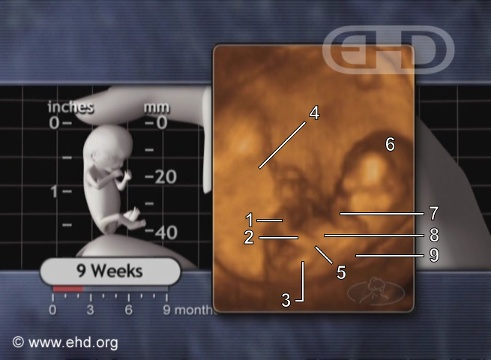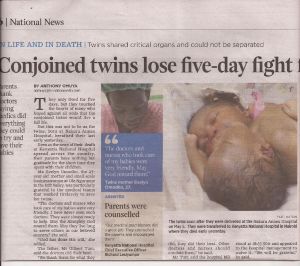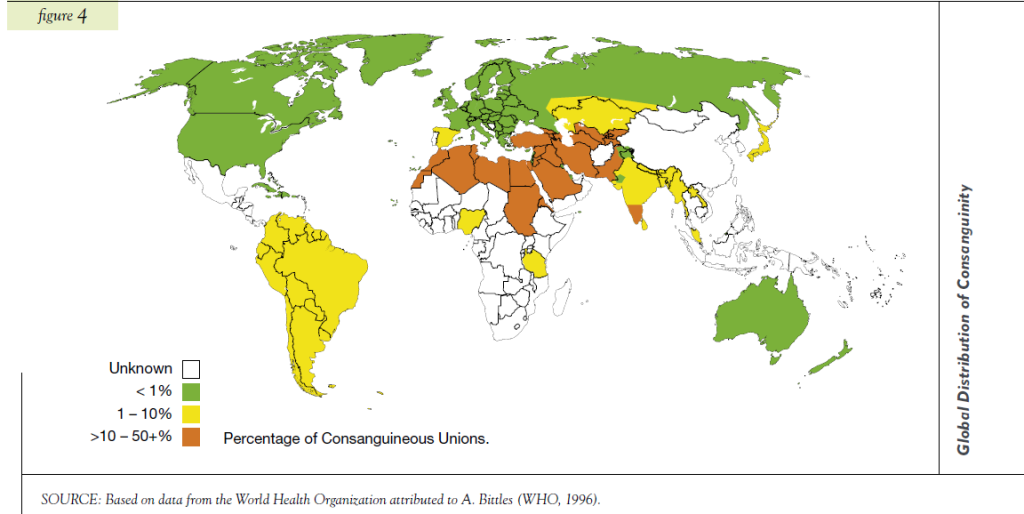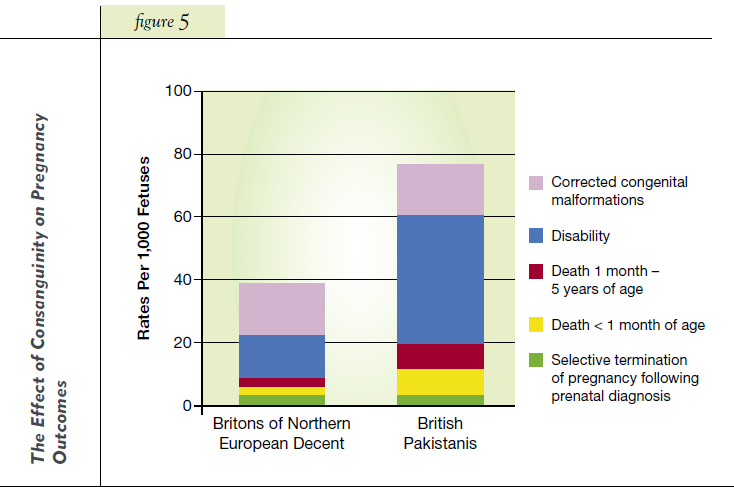
Birth defects …. more preventable than you thought
Africa is still experiencing very high child mortalities as a result of pneumonia, diarrhoea, malaria, birth asphyxia and such to a point where you would assume that birth defects are not a major cause of deaths on the continent. In fact we don’t often hear about birth defects except the very rare dramatic ones like the birth of conjoined twins.
However, Africa and the rest of the developing world do have a high burden of birth defects. To this effect, the March of Dimes issued the first ever global report on the burden of birth defects March of Dimes Global Report on Birth Defects: The Hidden Toll of Dying and Disabled Children. Although this report was written in 2006, it is still the most comprehensive global look at birth defects. The March of Dimes and 11 other international organizations have created the first ever World Birth Defects Day, today, the 3rd of March 2015, to raise awareness on this problem.
But what are birth defects?
A birth defect is defined as an abnormality affecting body structure or function that is present at birth. Birth defects are also known as congenital anomalies or congenital disorders or congenital malformations. All these terms can be used interchangeably.
According to the March of Dimes report, every year, about 8 million children are born with birth defects but only half of these children survive their first year of life. Most of these deaths occur in the developing world.
The report from the March of Dimes claims that 70% of all birth defects are preventable. The WHO website says that scientists do not know what causes half of birth defects, meaning that they cannot attach any causative agent to 50% of the birth defects. Whichever way you look at the numbers, both groups agree that there is a lot we can do to prevent 50-70% of all birth defects.
Many people think that preventing birth defects requires some expensive equipment and facilities. Expenses that would have to be removed from the pressing, easier to tackle, communicable diseases. Nothing is further from the truth. There are a lot of simple ways to bring down the preventable causes of birth defects.
The most simple is to improve the nutrition of women during their child-bearing years, managing maternal health problems and avoiding maternal infections. None of these require huge government investment and can easily be part of primary health care.
To reduce birth defects, a woman’s diet needs to be balanced well before conception. Her diet should be rich in folates, iodine and iron. Ensuring that everyone uses iodised salt, that the woman gets plenty of greens and takes folic acid supplements before conception and during the early stages of pregnancy will reduce birth defects that are as a result of poor maternal nutrition. Folic acid tablets are not expensive and can easily be part of ante-natal services.
But those first weeks catch most pregnant women unaware. For example, I was not aware that I was pregnant until I was 6 weeks or more into my pregnancies. Unfortunately for us women, those early weeks when we are unaware of our pregnancies are the most crucial when it comes to the development of birth defects in our developing babies. Studies have shown that about 70% of miscarriages in industrialized countries are as a result of congenital abnormalities.
Other than nutrition, women are advised to stay clear of alcohol during early pregnancy. Fetal alcohol syndrome is associated with babies born of alcoholic mothers. These babies have poor brain growth, facial abnormalities and tend to have behavioural and cognitive problems. The burden of alcohol-related birth defects in Africa has been noted in the wine-growing Western Cape Province in South Africa where more than 4% of children 6-7years old show signs of fetal alcohol syndrome. It is thought to be the highest prevalence that has ever been reported in a stable community.
Some drugs have been known to cause birth defects. There is the all to infamous thalidomide, which most unfortunately was used to reduce morning sickness – hitting the babies at their weakest point and leaving them with hardly any limbs. This drug has since been highly regulated. Other drugs that are known to cause birth defects include drugs used to treat epilepsy and some blood-thinners. A drug used to perform early abortions, misoprostal, has also been linked with birth defects.
Pregnant women are advised not to use medicinal drugs unnecessarily. I remember being told during my first pregnancy that I should consult a doctor if I need to take anything other than paracetamol during early pregnancy. This may be considered a bit extreme, but you have to bear in mind that it’s only in laboratory animals that tests for birth defects for various drugs are established. Pregnant women are never included in clinical trials of any new drugs and therefore it’s only when the drug is out in the market that such adverse events as birth defects are noted. Thalidomide for example did not show any signs of causing birth defects in animals and was therefore thought to be safe for humans – leading to tragic outcomes.
In Kenya and most of Africa, you can get many prescription drugs over the counter. We have observed the proliferation of unregulated pharmacy shops opening at every street corner. It is scary what type of drugs anyone can buy over the counter and pregnant women ought to be extremely careful and err on the side of caution when it comes to swallowing any pills. Although the advice given to me seemed extreme – I would advice women in early pregnancy to always seek trusted advice if swallowing any medicine other than paracetamol.
Another controllable factor is consanguineous marriages. This is a very long word meaning – marriages between first cousins and other close relatives. The Middle east and North Africa have a high prevalence of this kind of marriage – by the time this map was drawn, it was not clear how much of a problem this is for the rest of Africa.
The graph below compares pregnancy outcomes between Britons of Northern European decent and British Pakistani population in Birmingham in 1993. More than 75% of the British Pakistani are married to a relative, 55% to a first cousin while less than 1% of Britons of northern European decent have consanguineous unions.
Marrying a first cousin doubles the risk of serious birth defects……there is a reason for all those taboos about sexual relations among relatives that are prevalent amongst most African tribes.
Another very easy to sort out cause of birth defects, is preventing infections just before and during pregnancy. Toxoplasmosis is a parasitic disease that is common globally, and women who acquire this infection in pregnancy have a 40% chance of passing it on to their babies. The earlier in the pregnancy the mother has this infection, the more the damage it can cause. To prevent this, pregnant women should avoid contact with cat faeces and should be spared any jobs that involve cleaning out places with cat poo.
The vagaries of syphilis in pregnancy are well known and in Kenya, a test is always conducted as part of ante-natal services. Ensuring that all mothers are treated during pregnancy reduces the chances of passing this disease which can result in brain damage, blindness, hearing loss and tooth problems if not treated soon after birth.
Viral infections that can lead to birth defects include: chicken-pox , HPV, rubella and herpes simplex. According to the March of Dimes report, if there is a person with chicken pox in the home of a woman that did not have chicken pox as a child and was never vaccinated, there is a 90% chance of the pregnant woman contracting chicken pox. Although only a small percentage of women who acquire chicken pox pass it on to their babies, the birth defects the babies experience are debilitating. Babies are born with malformed or paralyzed limbs, blindness, seizures, smaller than normal heads.
Vaccinations for HPV and rubella are available but very few countries in Africa have undertaken vaccination of girls against these viral diseases.
Maternal insulin-dependent diabetes is also a causative factor for birth defects. Poor diabetes control is common in developing countries .
Some others are beyond our immediate control but we can still do something about them. Let’s look at a blood disorder like sickle cell anaemia. This disorder is found in people from malarious areas and developed as a means of protection against malaria. People with a single sickle cell gene who are known as carriers have about 90% protection against severe malaria. However, the people unfortunate enough to have both sickle cell genes have a painful condition called sickle cell disease.
Nevertheless, this also has a solution, which many may find awkward. It is genetic counselling. If as a couple, you are from a malaria endemic area like the Coast or Lake Victoria region, then as a couple, you can get tested for the presence of the sickle cell gene. If both of you have the gene, there is a probability that 1 out of 4 of your children will have the sickle cell disease. You then have to make a decision, whether you will go ahead with the risk or part ways. If you decide to take the risk, you are then prepared for the possibility that you may have a child who will need to be on constant treatment and may be in and out of hospital due to sickle cell crisis which is a very painful condition. A very difficult decision to make.
To reduce disability and improve the quality of life, early interventions for children with birth defects are the way to go. Children with cleft lip and palate for example ought to receive surgical intervention as soon as possible. Holes in the heart are also very common congenital defects and many of these if fixed early can allow a child to live a comfortable life. Children with such problems should not be left waiting for surgery for years, denying them a fulfilling life.
There are other matters with early detection of fetal malformations. In many Western countries, pregnant women are tested for Down’s syndrome and the option for abortion offered. This is a highly emotive issue and perhaps I should not really have brought it up in this article since there are so many other non-controversial ways to control birth defects. But it is growing in popularity and we need to bring this debate out into the light.
Comments
Comments are closed.






Sandy
Thanks!! This is informative… quite funny imagining that its best to keep cats away for a while 🙂